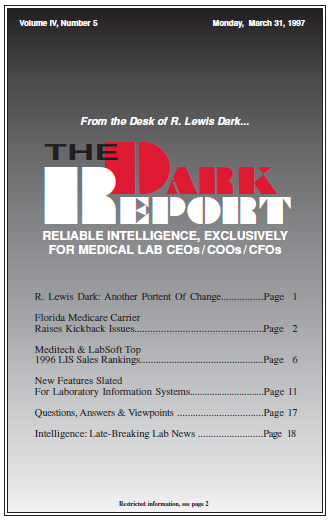CEO SUMMARY: Turnover and turmoil are the big news in the LIS field. Hospitals and commercial laboratories are upgrading or replacing their existing LIS software at a rapid pace. Meanwhile, mergers and consolidations within the LIS industry create new power players. LIS conversion projects continue to be difficult, expensive and time-consuming. Market leaders Meditech and […]
To access this post, you must purchase The Dark Report.


